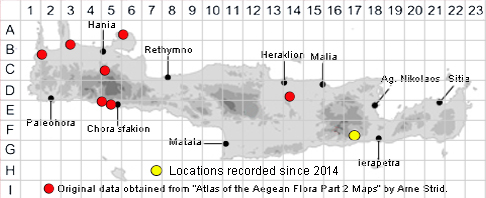SPECIES DESCRIPTION
BALLOTA ACETABULOSA
Family and Genus:- See- LABIATAE
Common Names:- Garden horehound
Homotypic Synonyms:- Beringeria acetabulosa, Marrubium acetabulosum,
Pseudodictamnus acetabulosus.
Meaning:- Ballota (Gr) A name used by the Greek physician and botanist
Dioscorides.
Acetabulosa (L) Saucer-shaped, saucer-like.
General description:- Perennial woody at the base.
Stems:-
1) Up to 60(-80) cm, greyish-tomentose, with simple and stellate hairs, papillae and
glands.
Leaves:-
1) Middle and upper cauline, 3-5 x 3-4 cm, broadly cordate at the base,
suborbicular, margins crenate-dentate.
2) Petiole, 5-15 mm.
Flowers:-
1) Bracteoles, 4-8 mm, linear to spathulate, membranous.
2) Verticillasters, 6- to 12-flowered.
3) Calyx, 12-15 mm, hypocrateriform; limb (12-)15-20 mm in diam, the margin
undulate, smooth or mucronulate.
4) Corolla, 15-18 mm, purple and white.
Fruit:-
1) Nutlets, oblong, rounded at the apex.
Key features:-
1) Bracteoles, not pungent.
3) Verticillasters, 6- to 12-flowered.
4) Calyx-limb, (12-)15-20 mm diam, undulate or irregularly crenate, smooth or
mucronulate.
Habitat:- Gregarious constituent of open dry shrubby vegetation on rocky
limestone slopes, sometimes in ruderal habitats. 0-1000(-1700) m.
Distribution:- Endemic Aegean, Greece, W. Turkey & Libya. Localized in Crete,
known only from a few locations in the west, with a recent find (2014) near Males in
the Dikti mountains
Flowering time:- Apr to early July.
Photos by:- Steve Lenton

